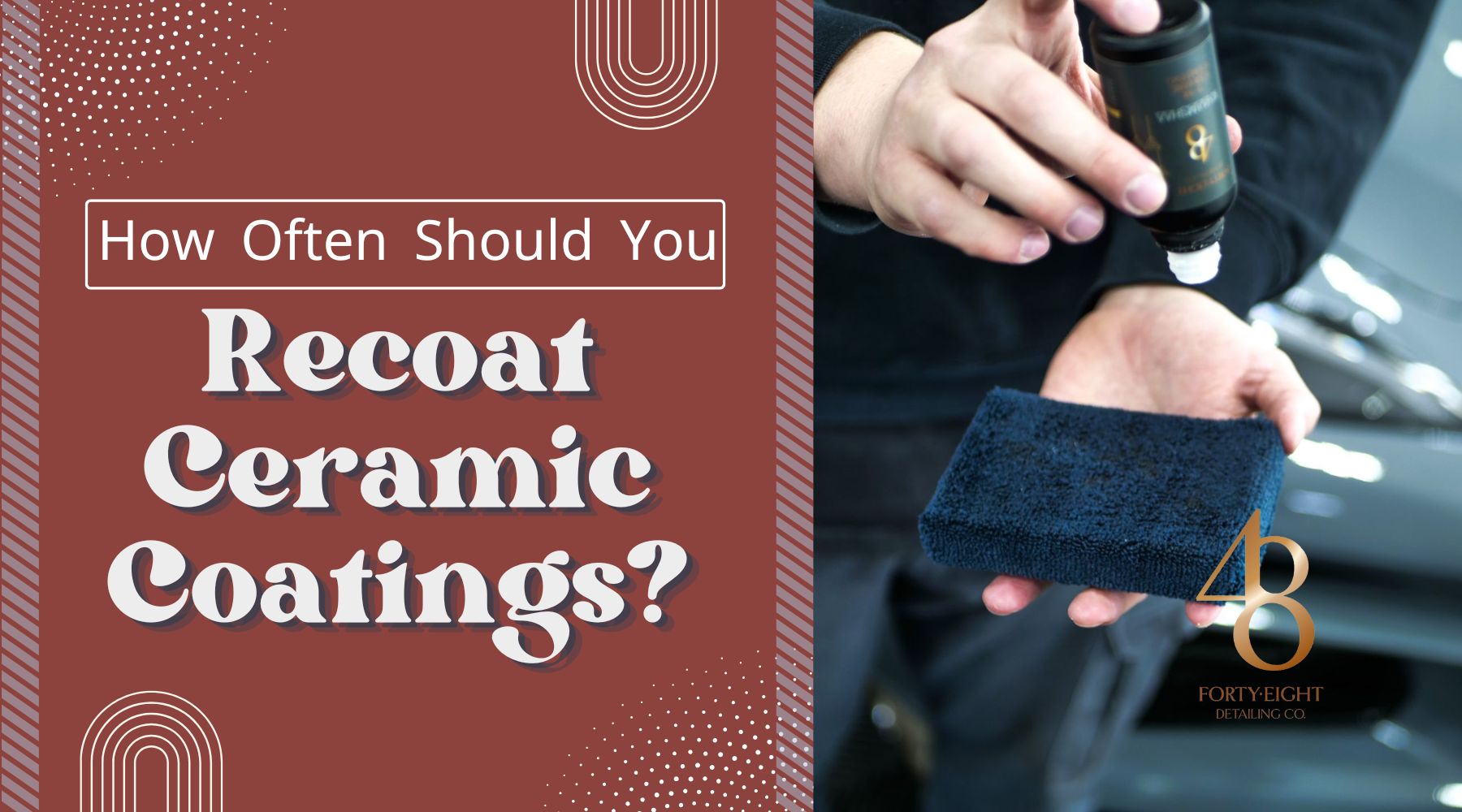If you’ve ever asked yourself how often should you recoat ceramic coatings, you’re not alone. This is one of the most common questions among car owners—especially here in sunny Surprise, AZ, where the intense UV rays, swirling dust storms, and sudden monsoon rains can all take a toll on your vehicle’s protective finish. Even the most durable ceramic coating isn’t invincible, and over time, environmental factors will gradually diminish its performance.
In this guide, we’ll break down exactly how long ceramic coatings typically last, when it’s the right time to reapply, and the telltale signs that your coating may be losing its effectiveness. You’ll also discover expert maintenance tips and proven upkeep practices to keep your ride looking showroom‑fresh for years to come. Whether you’ve invested in a professional application or taken the DIY route, understanding recoating intervals can help you protect your investment and maintain that flawless, high-gloss shine.
Understanding Ceramic Coating Durability
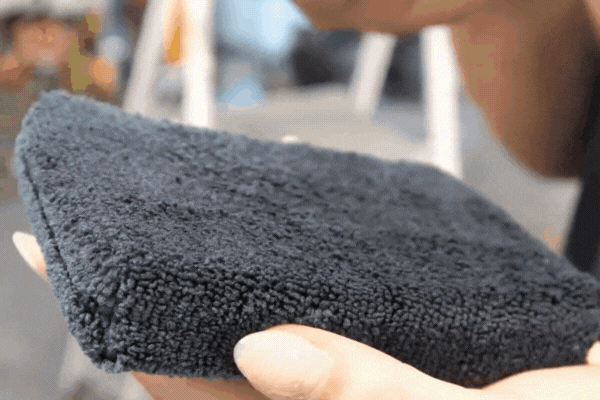
Ceramic coatings are advanced sealants designed to enhance gloss, repel contaminants, and guard against UV and environmental damage. Most professionally applied coatings last 2–5 years, and under ideal conditions, can even extend closer to 10 years. However, durability hinges on factors such as product quality, proper curing, and surface preparation—areas where 48 Detailing’s professional application standards ensure long-lasting results.
In Surprise, Arizona, extreme heat, intense sun exposure, dust storms, and monsoon moisture can shorten ceramic lifespan. That’s why local expertise matters when considering a maintenance plan optimized for harsh conditions.
Factors That Influence Recoating Frequency
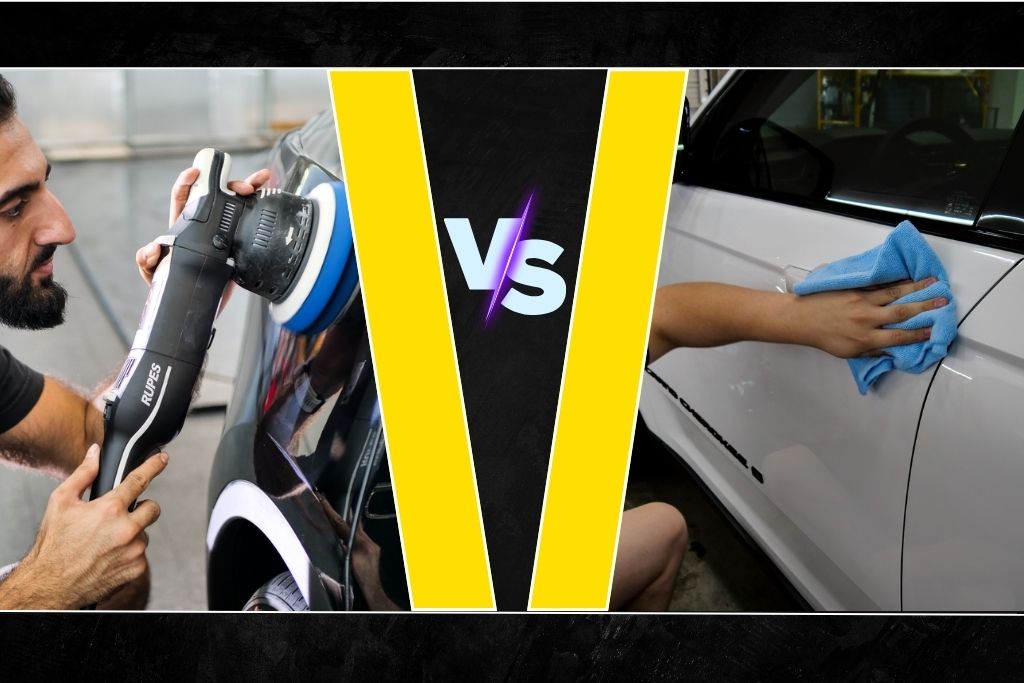
Coating Quality: Professional vs. DIY
A high-grade professional ceramic coating generally outperforms DIY kits in terms of longevity and resistance. On the other hand, DIY ceramic coating touch-up or beginner kits may require more frequent attention or supplemental spray ceramic booster intervals every few months.
Driving Conditions and Environmental Impact
Daily air pollution, grit from desert roads, and direct sun exposure all accelerate coating wear. Salt or monsoon moisture can further degrade hydrophobic performance, making environmental impact on ceramic longevity a key consideration.
Maintenance Routine Matters
A strict ceramic coating maintenance schedule, using only pH-neutral car shampoo, avoiding abrasive tools or frequent clay bar use, and following a surface decontamination process as needed, can significantly improve the lifespan. Skipping these steps introduces swirl marks and dullness, reducing performance.
Discover our ceramic protection services, learn how ceramic coating shields against UV rays, and explore our pricing guide to find the right solution for your vehicle.
Recognizing When It's Time to Recoat
Over time, even the best ceramic coatings begin to show signs of wear. If you notice any of the following, it’s a strong signal that it may be time to reapply:
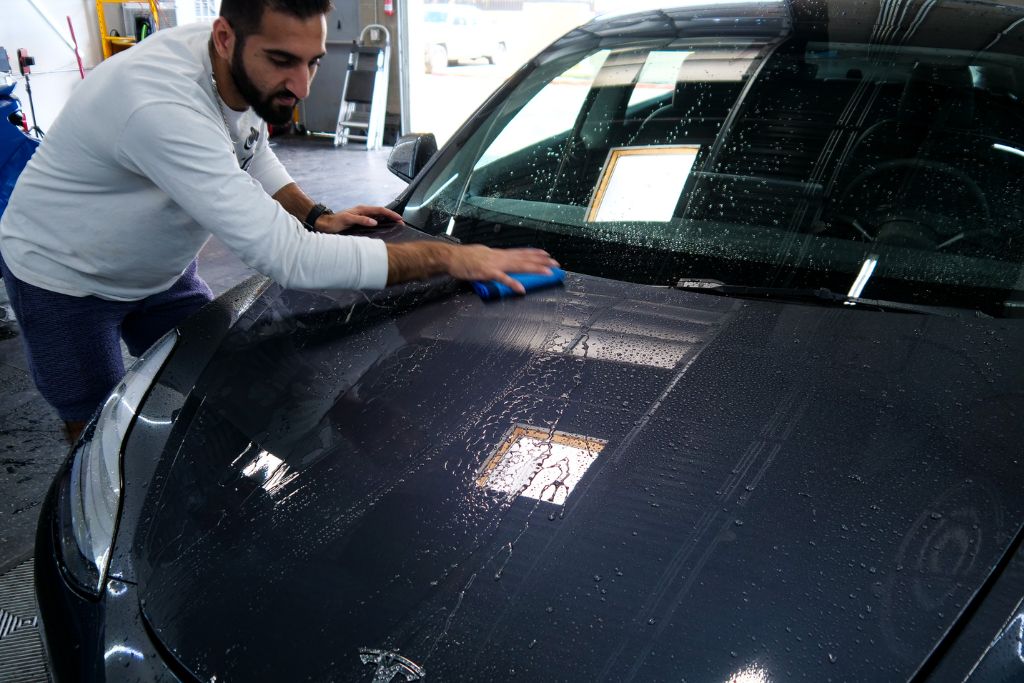
- Fading hydrophobic effect — Water no longer beads or sheets off the surface, indicating the coating’s protective layer is breaking down.
- Loss of gloss — Your paint starts to look flat, dull, or cloudy instead of having that crisp, mirror‑like shine.
- Surface defects — Light scratches, swirl marks, or a gritty texture suggest the coating is no longer shielding the paint effectively.
- Washing becomes difficult — dirt, bugs, and road grime cling stubbornly to the surface, making cleaning more time-consuming.
It’s also worth noting that environmental factors, such as Arizona’s intense sun, abrasive dust, and seasonal monsoon rains, can speed up this wear process. Regularly using a ceramic coating inspection checklist or scheduling an annual detailer inspection with a trusted shop like 48 Detailing will help you spot early warning signs before they turn into costly paint damage.
Proactive recoating not only restores gloss and hydrophobicity but also ensures your vehicle stays better protected year‑round.
Typical Maintenance Schedule & Reapplication Intervals
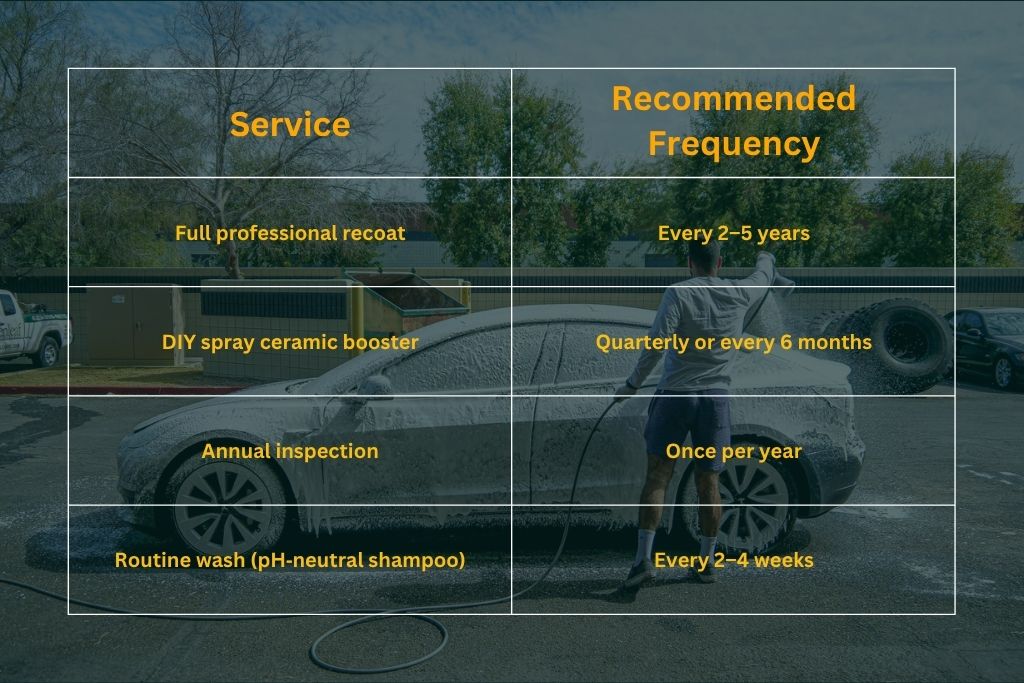
Most vehicles benefit from a professional recoat every 2–5 years, with 2–3 years being the most common interval in Arizona’s harsh climate. Using a spray ceramic booster every few months helps restore hydrophobicity and gloss between full recoats. Annual inspections catch early wear, while regular washes with pH‑neutral shampoo prevent buildup and protect the coating.
Overall, professional applications offer longer-lasting protection, but DIY upkeep can help extend performance between primary services.
The Recoating Process—What to Expect
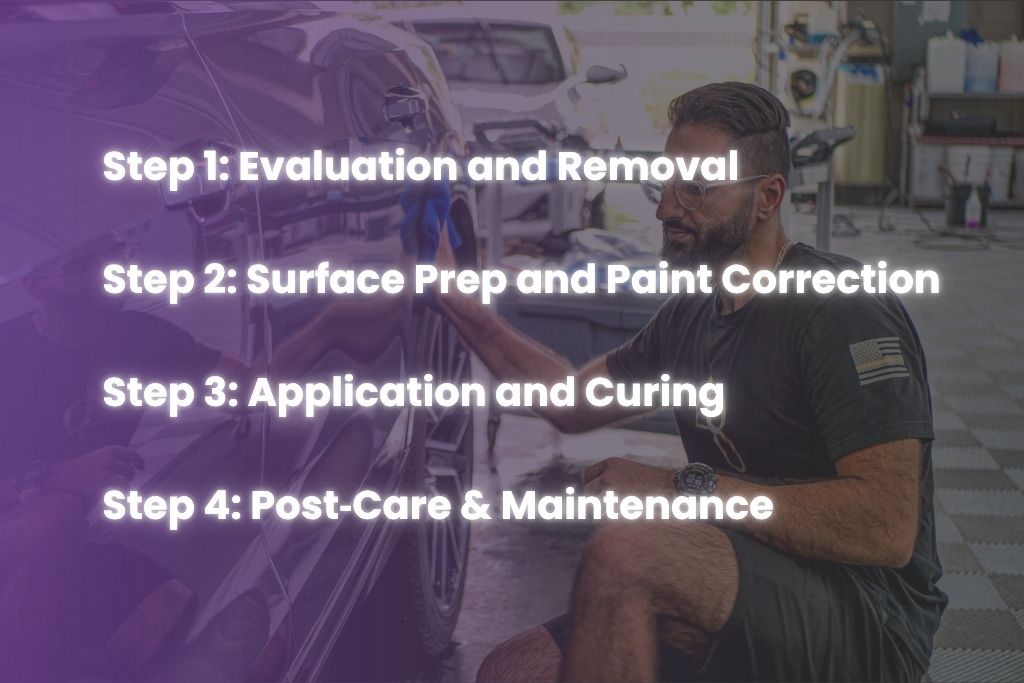
Step 1: Evaluation and Removal
A trusted detailer inspects the coating’s current state. If it has failed or shows blemishes, it should be removed or polished. This answers the common question: Do I need to remove old ceramic coating before applying more?—The answer is yes, if the old layer is compromised.
Step 2: Surface Prep and Paint Correction
Thorough washing, clay bar decontamination, and paint correction ensure a perfect canvas, this surface decontamination process is essential for adhesion and performance.
Step 3: Application and Curing
Application follows strict guidelines, and then the coating cures. Yes, the time it takes for ceramic coating to cure varies—but most pro-grade coatings need at least 24–48 hours to harden properly.
Step 4: Post‑Care & Maintenance
After curing, regular maintenance washes using pH‑neutral products and periodic check‑ups help maintain gloss and hydrophobicity.
Why Choose 48 Detailing for Your Ceramic Recoating Needs
When it’s time to reapply your ceramic coating, trust 48 Detailing in Surprise, Arizona, for expert care tailored to our desert climate. We understand the unique challenges vehicles face here, from intense UV rays to abrasive desert dust, and we use premium-grade coatings and precise surface preparation to ensure maximum durability, gloss, and protection.

Here’s what sets us apart:
- Premium-grade ceramic coatings for long-lasting, high-gloss performance
- Expert surface preparation to promote maximum bonding and even coverage
- Custom maintenance plans with spray ceramic booster applications, annual inspections, and touch‑ups to extend coating life
- Personalized guidance for desert driving, UV defense, and paint correction based on your vehicle’s needs
- Local expertise that ensures your coating stands up to Arizona’s extreme weather conditions
Whether you’re looking to maintain your daily driver or preserve the finish on your dream car, 48 Detailing offers the skill, products, and local know‑how to keep your vehicle looking its best for years to come.
Summary & Best Practices
- Full professional recoating every 2–5 years, possibly longer with proper care
- Spray booster application every few months helps maintain strong hydrophobicity and gloss.
- Annual inspections catch wear early—don’t wait for visible damage to occur.
- Regular maintenance using pH‑neutral soaps, avoiding harsh cleaners or frequent clay bar use
- Arizona-specific habits: rinse dust regularly, park in shade, avoid abrasive washes
Maintaining your ceramic coating not only preserves your vehicle’s shine but also defends against the unique environmental challenges of Surprise, AZ. Interested in a professional evaluation? We’d be happy to book your free inspection and maintenance appointment with 48 Detailing—your local authority on lasting paint protection.
Ready to give your vehicle the protection it deserves? Schedule your free inspection with 48 Detailing today and let our local ceramic coating experts keep your car looking showroom‑new year‑round.
How long should you wait between coats of ceramic coating?
Allow proper curing—typically at least 24–48 hours—before applying a second layer if needed during the initial process.
Can I apply a ceramic coating over an existing ceramic coating?
Only if the old coat is effectively intact. Otherwise, it’s best to remove it and start fresh.
Can you ceramic coat your car too much?
Excessive layering without proper cleaning and preparation can reduce adhesion and lead to surface issues.
How long do ceramic coatings last?
Under ideal conditions, 2–5 years is standard, with premium coatings reaching up to 10 years.
Why does a ceramic coating lose hydrophobicity over time?
Wear and tear, sun exposure, and chemical stress degrade the water‑repellent surface.
Why do environmental factors accelerate degradation?
Arizona’s intense UV, dust, rain, and heat erode coating, causing faster breakdown.
Why is regular inspection important even if the coating seems fine?
Hidden wear and early failure signs can be caught before damage spreads.
Why does applying a booster every few months help prolong lifespan?
Boosters enhance repellency and gloss, filling in microscopic wear.
Why may a DIY coating last less than a professionally applied one?
Less reliable prep, lower‑grade formulas, and inexperience reduce lifespan.
Why should pH‑neutral soaps be used for maintenance washes?
Acidic or alkaline cleaners strip away the coating. pH-neutral options preserve hydrophobic layers.

